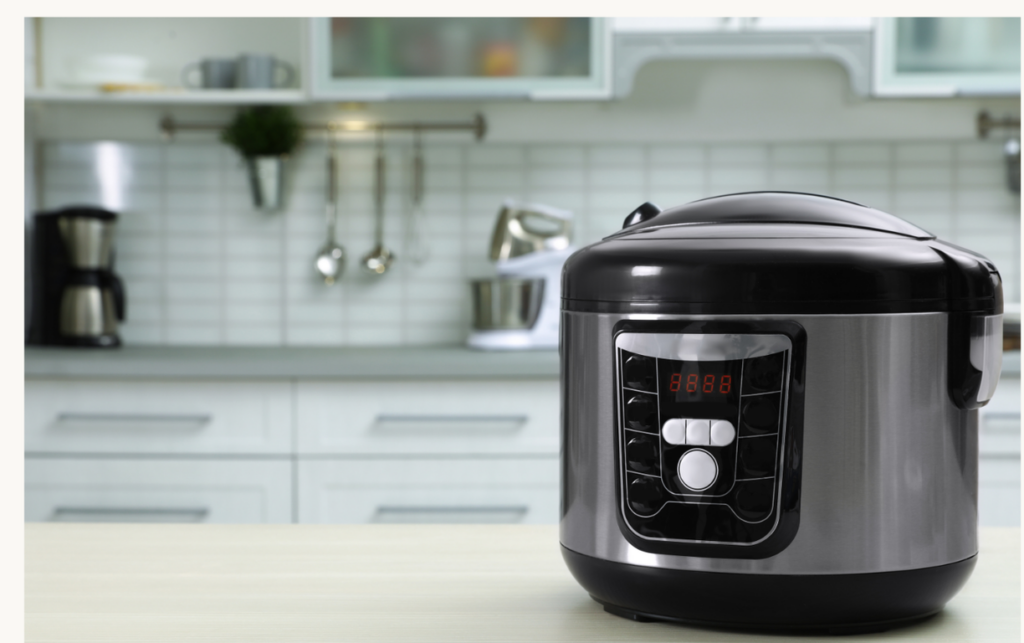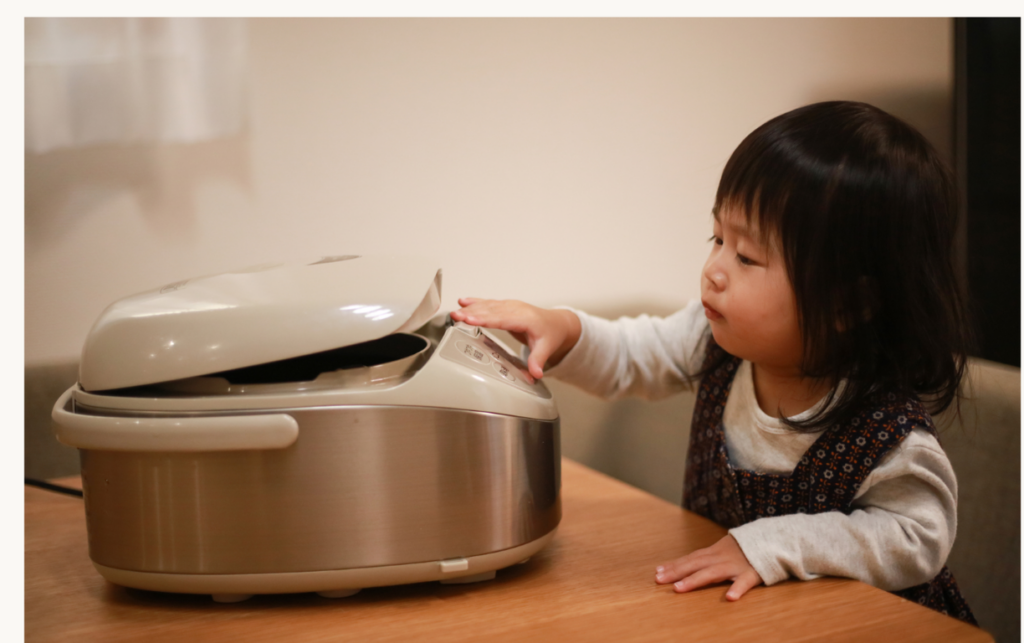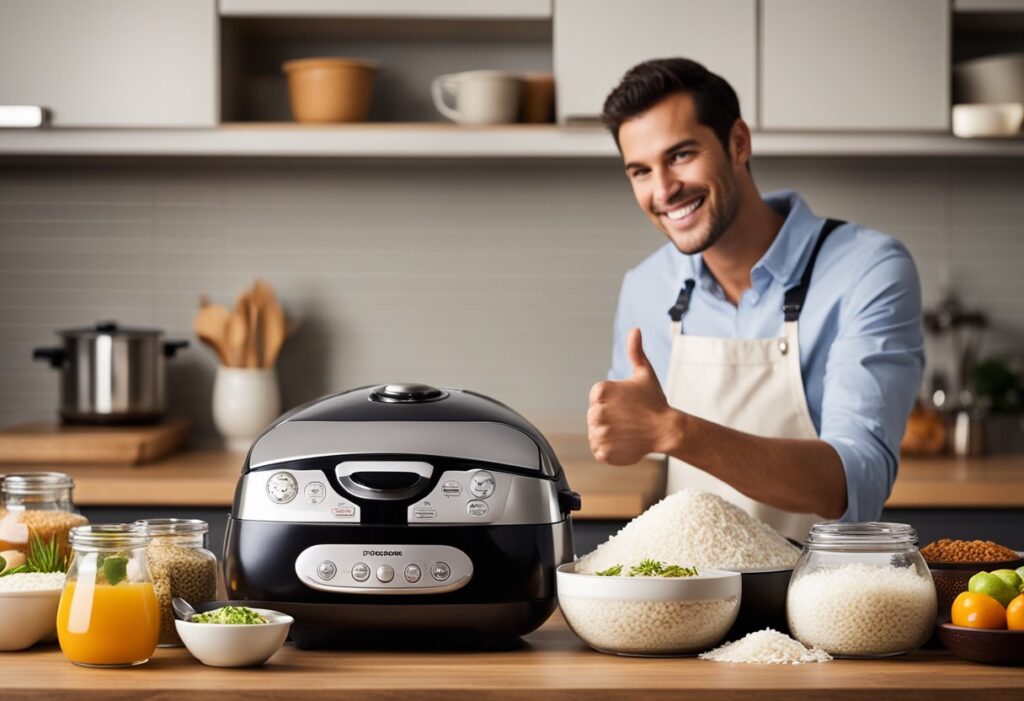Physical Address
304 North Cardinal St.
Dorchester Center, MA 02124
Physical Address
304 North Cardinal St.
Dorchester Center, MA 02124

Finding the perfect rice cooker for your kitchen can feel overwhelming with so many options available. To choose the right rice cooker, consider your cooking needs, the types of rice you plan to prepare, and the features that make cooking easier. The ideal rice cooker will simplify your meal prep, giving you consistently delicious results every time.

When selecting a rice cooker, remember to evaluate the size, programmable settings, and specific features such as steamer capabilities. Understanding what you want from your rice cooker will lead you to a model that complements your cooking style and kitchen setup. With the right choice, you can enjoy perfectly cooked rice and other grains effortlessly.
The right rice cooker not only enhances your cooking experience but also fits into your lifestyle. Choosing wisely can lead to a dependable kitchen appliance that will serve you well for years to come.
When choosing a rice cooker, it’s important to know the different types available. Each type has unique features that can affect cooking time, quality, and ease of use. Below are the main categories to consider.
Conventional rice cookers are the most common type. They typically have a simple design and few settings. You add water and rice, and once it reaches a boil, the cooker switches to warming mode.
This type is suitable for beginners. It cooks rice well but may not handle different textures or types of rice as precisely. Features can include keep-warm functions but lack advanced options.
Look for a model that has a non-stick inner pot. This makes cleaning easier. Prices for conventional rice cookers tend to be lower, making them a good budget option.
Micom (microcomputer) rice cookers offer more features than conventional models. They include a microprocessor that adjusts cooking time and temperature. This creates better results for various rice types, including brown and sushi rice.
You can also find settings for porridge or steaming vegetables. These cookers have digital displays, making them user-friendly. Some even come with fuzzy logic technology, which fine-tunes cooking for perfect results.
Expect to pay more for a Micom rice cooker due to these advanced features. They are versatile and can be a great investment if you cook rice regularly.
Induction heating rice cookers use magnetic energy to heat the inner pot directly. This method provides quick and even heating. As a result, it cooks rice more consistently than conventional methods.
They often have multiple settings for different rice types. Features can also include timers and keep-warm options. Induction cookers can adjust to temperature changes automatically, ensuring optimal cooking results.
These rice cookers generally come at a higher price. However, if you prioritize cooking speed and quality, an induction heating model is worth considering.
Pressure rice cookers combine pressure cooking and rice cooking functions. This type cooks rice quickly while retaining moisture and flavor. It’s particularly good for large batches.
Many pressure rice cookers have various settings for grains, soups, and stews. The advanced technology allows for cooking at high pressure, which greatly reduces overall cooking time.
Some models can also double as multi-cookers, making them versatile kitchen appliances. While they tend to be more expensive, the ability to prepare multiple dishes can justify the cost for many users.
When selecting a rice cooker, it is essential to focus on specific features that enhance usability and improve cooking results. Understanding these key aspects will help you choose the right appliance for your kitchen needs.
Capacity is one of the most important factors to consider. Rice cookers come in various sizes, typically ranging from 3 to 10 cups. If you usually cook for one or two people, a smaller cooker (3-5 cups) is usually sufficient.
For larger families or gatherings, opt for a 5-10 cup model. This ensures you prepare enough rice in one batch. Be mindful of your kitchen space as well, since larger models can take up more counter room.
Look for rice cookers with multiple cooking settings. These might include white rice, brown rice, porridge, and steam functions. A variety of options gives you flexibility in meal preparation.
Some advanced models even have specialized settings for different types of rice or grains. Additionally, features like a keep-warm function are useful for maintaining temperature after cooking. This is important for busy days when meal timing may vary.
Select a rice cooker that is user-friendly. Clear digital displays and intuitive controls make cooking easier. Many rice cookers have non-stick inner pots, which simplify cleanup.
Consider the ease of removing and washing the inner pot as well. Some parts may be dishwasher safe, which can save time. Always check for features that enhance cleaning. A model with a removable steam vent is a plus, as it prevents buildup and makes maintenance simpler.

When choosing a rice cooker, it’s essential to assess your cooking habits, consider convenience features, and evaluate your budget. Making informed decisions in these areas will help you find the best rice cooker for your kitchen.
Start by identifying how often you cook rice and for how many people. If you usually cook for one or two, a small rice cooker with a capacity of 3-5 cups is often sufficient. For larger families or gatherings, consider a model that holds 6-10 cups or more.
Think about the types of rice you enjoy too. Some cookers can handle different grains like quinoa or oats, which adds versatility. Selecting a cooker that meets your cooking habits ensures you won’t waste food or energy.
Convenience features can significantly enhance your cooking experience. Look for rice cookers with automatic shut-off and keep-warm settings. These features can save you time and energy by ensuring your rice stays warm until you’re ready to serve it.
Additionally, consider rice cookers with multiple cooking functions. Models that offer steaming, slow-cooking, and even sautéing provide versatility, allowing you to cook a variety of meals. This can save space in your kitchen by eliminating the need for additional appliances.
Rice cookers come in a wide price range, typically from $20 to over $300. Your budget will guide your choices. Lower-end models often have basic features but still get the job done. If you want versatility and advanced features, be prepared to invest more.
Keep in mind that higher-priced models often come with better build quality and more cooking options. It’s worth it to invest in a quality product if you plan to use it frequently. Always compare features to ensure you’re getting the best value for your money.

Choosing the right rice cooker involves knowing which brands are reliable and what other users think about them. Customer feedback provides insight into the performance and features you might need.
When it comes to rice cookers, Zojirushi is often regarded as one of the most reputable brands. Their cookers are known for quality, durable design, and advanced technology. Many users appreciate the precise cooking settings for various types of rice.
Other top brands include Cuckoo, which is popular for its multifunctional models, and Panasonic, known for its user-friendly designs. These brands have solid reputations and consistently receive positive feedback.
Look for brands that offer a warranty and good customer service, as this can make a difference in your experience. Well-established companies usually have a history of reliability and innovation.
Customer reviews play a vital role in choosing the right rice cooker. They often highlight specific traits, such as ease of use, cooking performance, and reliability. For instance, many users rave about how quickly Zojirushi models cook rice to perfection, making meal prep faster.
Recommendations can also guide you toward features that might be essential, like steam functions or programmable settings. A common sentiment in reviews is the importance of selecting a size appropriate for your household—be it a small 3-cup model or a larger 10-cup cooker.
Pay attention to recurring themes in customer feedback. Consider both positive comments and complaints. This balanced view can help you make a more informed decision tailored to your needs.
When choosing a rice cooker, you might have specific concerns and questions. It’s important to understand what features matter, how size affects cooking capacity, and the benefits of different models.
Consider your cooking habits and how often you make rice. Think about the capacity you need based on the number of meals you prepare. A smaller cooker may be perfect for singles or couples, while larger families might require a capacity that serves more.
Look for rice cookers with multiple cooking settings, such as steaming and slow cooking. Advanced models often have fuzzy logic technology that adjusts cooking time and temperature for perfect rice. A clear display and timer feature add convenience to your cooking routine.
Rice cookers come in various sizes, typically measured in cups of uncooked rice. A 3-cup cooker is suitable for 1-2 servings, while a 5- to 10-cup model is better for families. Larger cookers, like 12-20 cup options, are ideal for preparing meals for gatherings or batch cooking.
A specialized rice cooker can deliver consistent results every time you cook rice. They often have features designed specifically for different types of rice, ensuring each variety is cooked perfectly. Additionally, many models include additional cooking options, helping you prepare a variety of dishes.
Look for a rice cooker that has a specific setting for basmati rice or a function that allows for precise temperature control. Models with advanced technology can prevent the rice from becoming sticky and ensure fluffiness. Reading reviews on performance with basmati rice can also help guide your choice.
There are many reputable brands that offer reliable rice cookers without a high price tag. Models priced under $50 often provide basic functions, while those in the $50 to $150 range offer more features. Researching customer reviews can lead you to budget-friendly options that still deliver good performance.